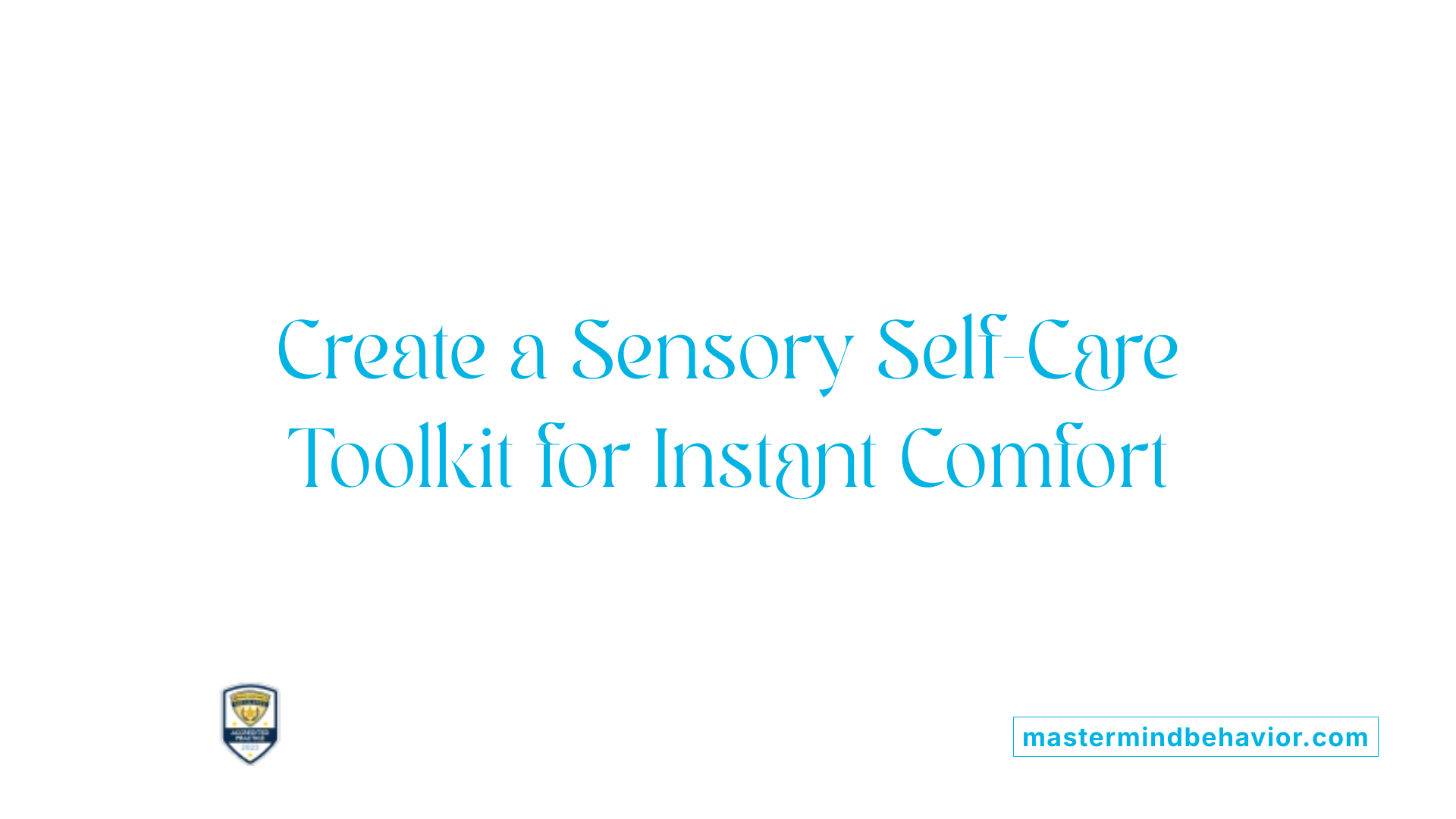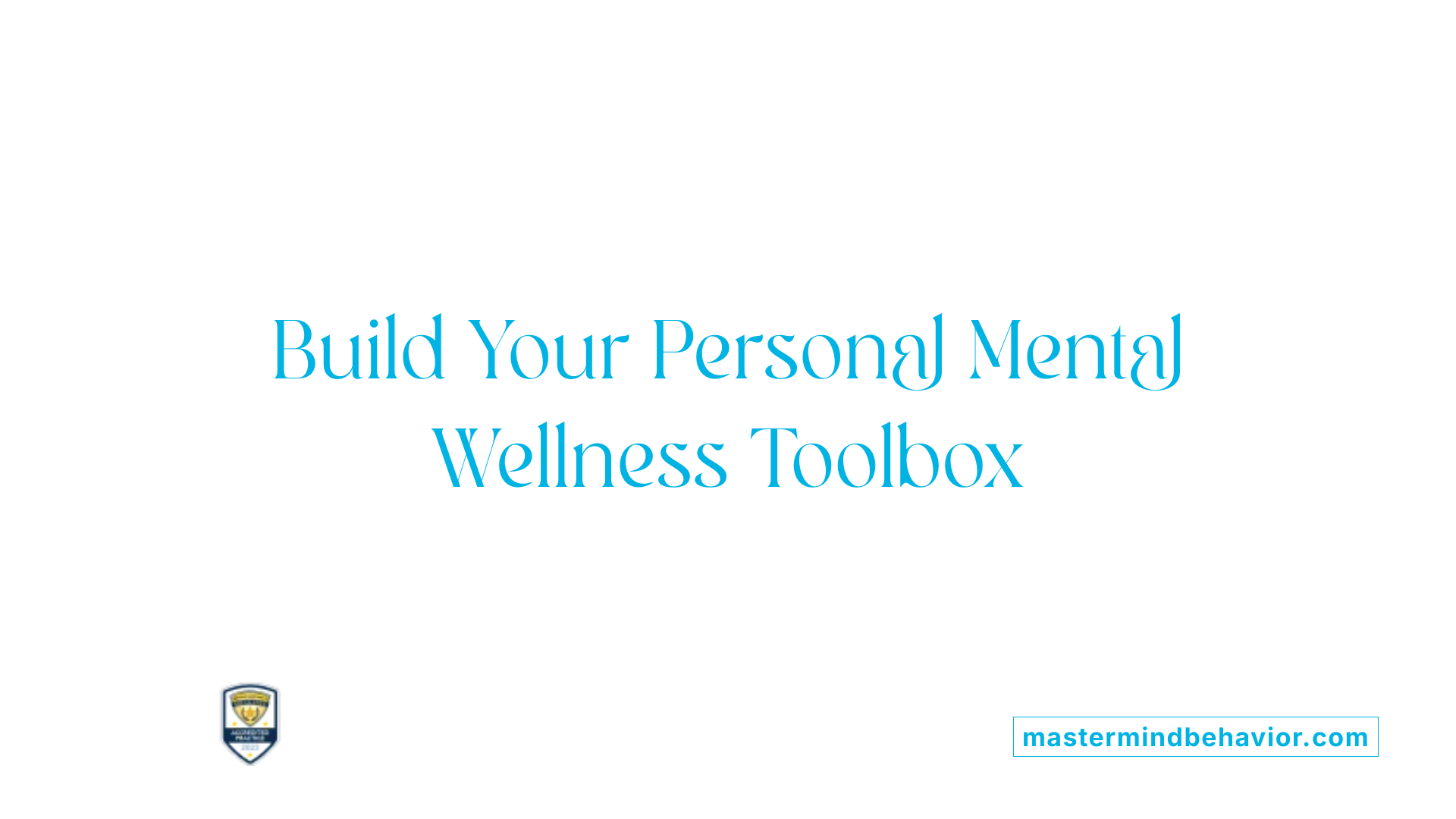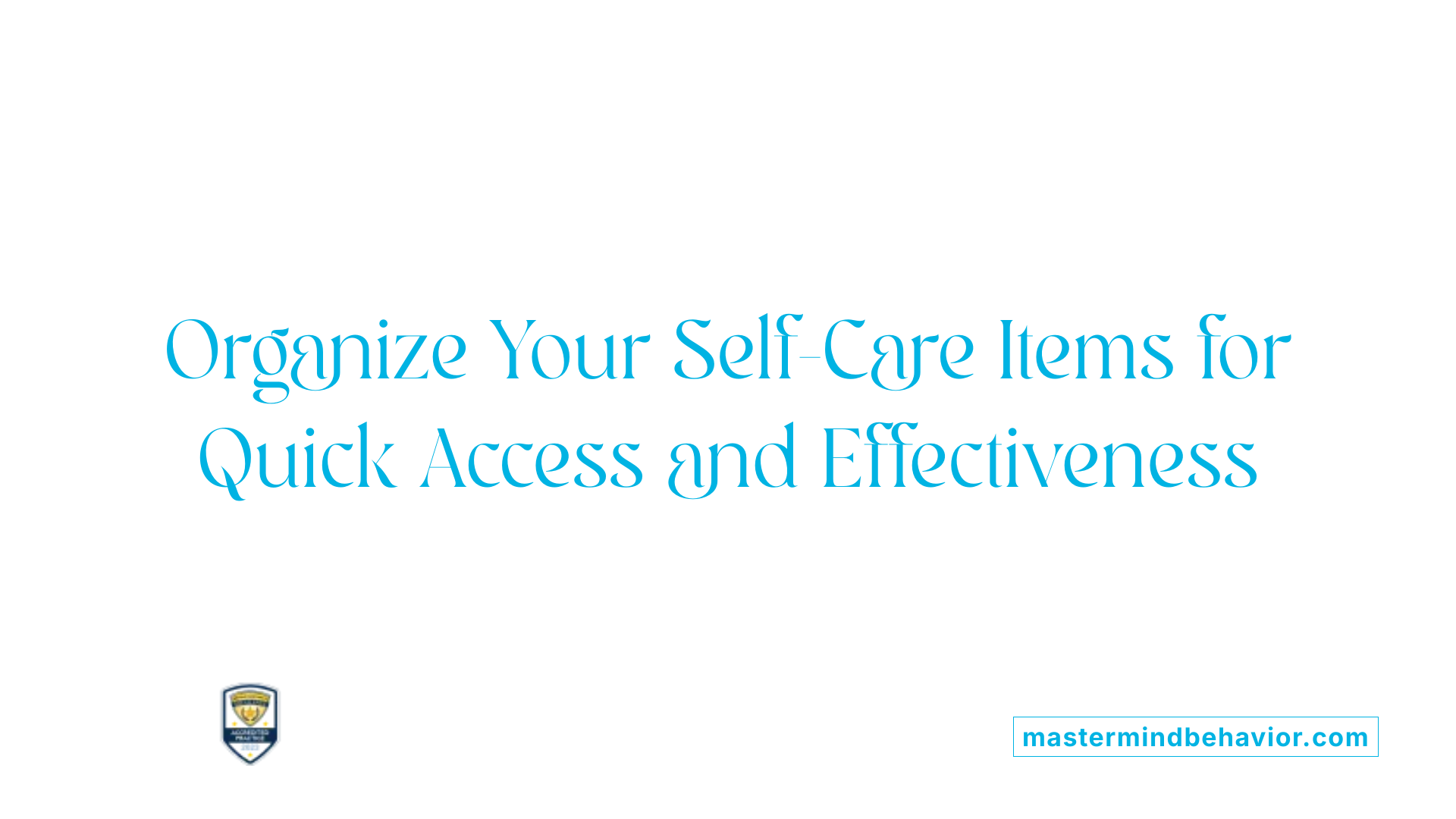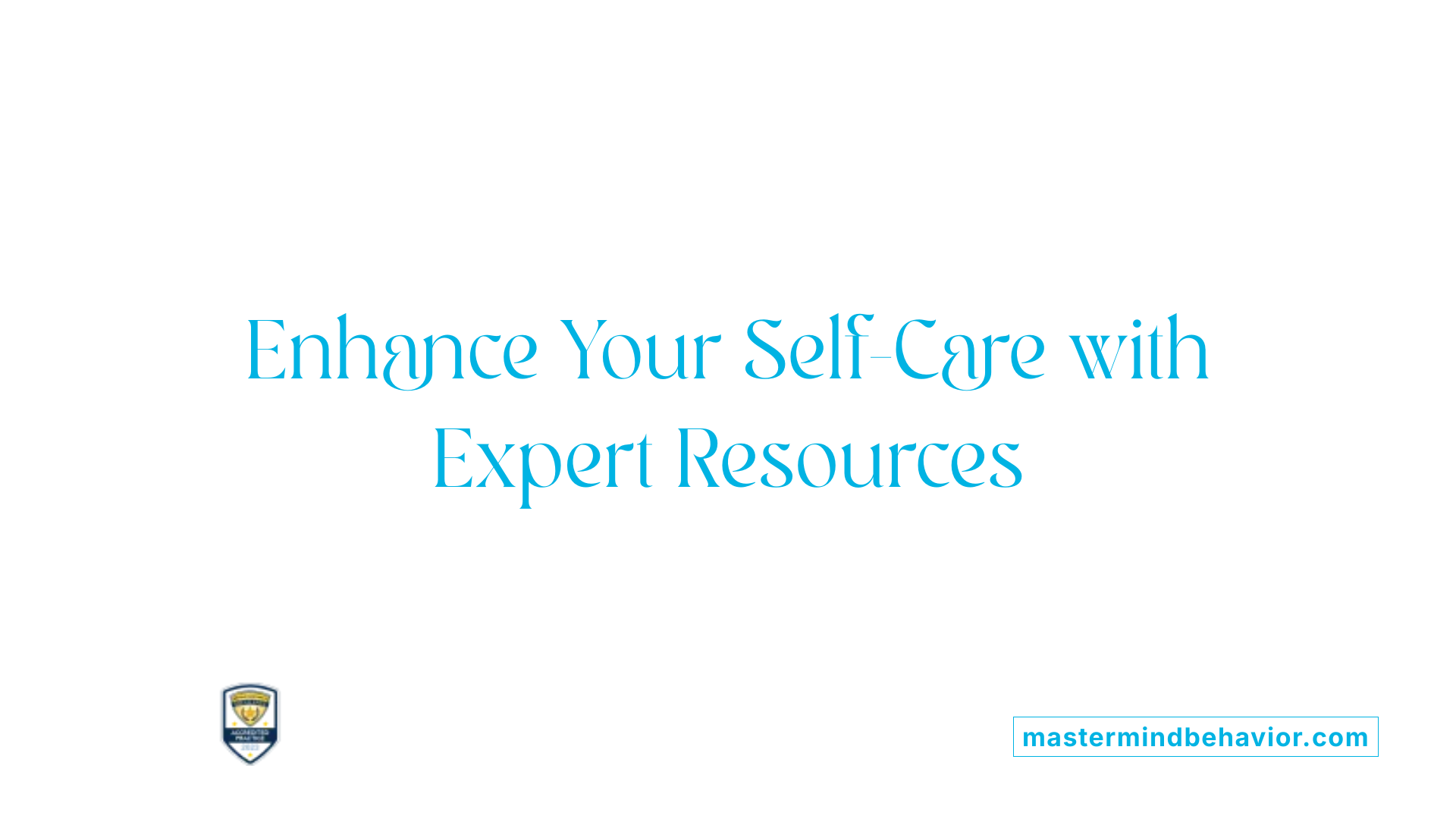Creating a Customized Home Therapy Toolkit
A well-designed therapy toolkit for home use can serve as a personal sanctuary, fostering emotional regulation, reducing stress, and promoting overall mental health. This guide explores practical steps and diverse tools to help you assemble a personalized collection of strategies, materials, and activities tailored to your needs. Whether you're seeking sensory grounding, creative expression, or relaxation techniques, developing a comprehensive toolkit ensures you have accessible resources to support your well-being in everyday life.
Foundations of a Home Therapy Toolkit
How can I create a personal therapy or self-care toolkit at home?
Creating a personalized home therapy or self-care toolkit is a meaningful way to foster emotional resilience and well-being. Start by recognizing what activities, objects, or practices bring you a sense of calm, safety, or energy. These might include comforting items like soft blankets, photographs of loved ones, or favorite books.
Gather supplies that support your mental health, such as journals for reflection, essential oils for relaxation, bath salts for unwinding, or sensory tools like textured fabrics or soothing sounds. Consider including media that lifts your spirits, like calming music or guided meditations.
Organize your toolkit thoughtfully to make it accessible, ensuring it encourages regular use. Think of it as an evolving collection—you can add or remove items based on what works best for you over time.
Incorporate a diverse range of strategies—physical activities like stretching or walking, creative pursuits such as drawing or crafting, social interactions with loved ones, or mindfulness exercises like deep breathing. Gratitude journaling or positive affirmations can also be powerful components.
Tailor your toolkit continually to reflect your changing needs and preferences. As you discover new practices or objects that bolster your mood and resilience, include them to keep your personal wellness strategy dynamic and effective.
Incorporating Sensory and Self-Care Items

What items should I include in a sensory self-care toolkit?
A well-rounded sensory self-care toolkit is designed to activate and soothe the five senses, helping to promote relaxation, grounding, and emotional regulation. For sight, include calming images, such as photographs of loved ones or favorite places, or visual stimuli like colorful or soothing visual cards. Tactile items that provide varied textures, such as textured fabrics, worry stones, stress balls, modeling clay, kinetic sand, and sensory bottles filled with calming liquids, are essential for engaging the sense of touch.
To support smell and taste, consider adding scented lip balms, essential oils such as lavender or peppermint, or favorite snacks and teas. These can help invoke comfort and relaxation. For auditory stimulation, include earplugs, noise-canceling headphones, or playlists of calming music or nature sounds to drown out overwhelming noise.
Creating tailored kits for different situations—whether at home, during travel, or for quick access—can ensure that you always have grounding tools readily available. Organizing these items with checklists helps to keep everything accessible and ensures that nothing is forgotten.
By combining visual, tactile, olfactory, gustatory, and auditory items, a sensory self-care toolkit becomes a powerful resource for managing stress, anxiety, trauma, or depression, enabling individuals to quickly find comfort and regain focus amidst emotional challenges.
Developing a Mental Health and Self-Care Strategy

How do I build a mental health toolkit for personal well-being?
Creating a robust mental health toolkit involves gathering a variety of practical strategies and resources tailored to support emotional resilience and stress management. Start with self-awareness—regularly check in with yourself to identify your current feelings and needs.
Mindfulness plays a vital role; practicing deep breathing, guided meditation, or progressive muscle relaxation can help ground you in the present moment.
Integrate activities that promote mental clarity and emotional stability, such as journaling thoughts and feelings or listing gratitude daily. These exercises foster positive thinking and self-compassion.
In addition to mental exercises, include physical activities that boost mood—this could be walking, yoga, or dancing—establishing routines that seamlessly fit into your daily life.
Using reminders, apps, or notes can support boundary setting around work and personal time, helping maintain a healthy balance.
Personalize your toolkit with tools that are meaningful for you—be it listening to calming music, engaging in hobbies, or practicing hobbies like drawing or gardening.
Don’t hesitate to seek external support through community programs, support groups, or professional help to broaden your emotional resources.
Building this kind of personal wellness plan is an ongoing process that evolves with your needs, encouraging long-term mental well-being and resilience.
Strategies for Personalization and Flexibility

What are effective strategies for personalizing a home therapy or self-care toolkit?
Personalizing a therapy or self-care toolkit is essential for ensuring it effectively supports your unique needs and promotes resilience. The process begins with a thorough assessment of your individual preferences, emotional triggers, and daily routines.
Start by identifying activities and items that bring comfort or relief, such as scented candles, favorite music, journaling supplies, or sensory objects like textured fabrics or calming images. Use self-care worksheets or reflection tools to clarify what techniques or tools resonate most with you.
Incorporate a diverse range of items that cater to different physical and emotional states, including sensory tools (like fidget toys or aromatherapy), comforting objects (blankets, stuffed animals), or outdoor activities like nature walks. Ensuring variety helps you adapt your toolkit to fluctuations in mood, energy, and circumstances.
Flexibility is also crucial. Include options for both quick, manageable practices—like a few deep breaths or a short meditation—and longer sessions that might involve more extensive activities such as journaling or yoga.
To keep the toolkit useful over time, regularly evaluate its contents and your preferences. As your needs evolve, you can replace items, add new strategies, or modify existing ones.
This ongoing adjustment not only keeps the toolkit relevant but also fosters a sense of control and self-empowerment. Customizing your self-care or therapy toolkit in this way helps sustain mental and emotional well-being, prevents burnout, and builds resilience against future stressors.
Materials and Organizing Your Tools for Easy Access
 Creating an effective home therapy or self-care toolkit involves thoughtful selection and organized storage of items that support emotional well-being and relaxation.
Creating an effective home therapy or self-care toolkit involves thoughtful selection and organized storage of items that support emotional well-being and relaxation.
Start by choosing containers that suit your space and mobility needs. Options include rolling carts, durable storage bins, or a simple duffle bag. The container should be sturdy, portable, and easy to open quickly in moments of need.
To keep your tools accessible, organize items into clear categories. For example, place sensory objects like worry beads, textured fabrics, or stress balls in one section. Art supplies such as colored pencils, markers, and coloring books can be grouped together, while relaxation tools like candles, face masks, and aromatherapy oils occupy another. Using labeled containers or small compartments helps in quick retrieval and prevents clutter.
Ensure your toolkit is tailored to your preferences and needs. Include calming and grounding items like photos of loved ones or nature scenes, favorite music recordings, or scent diffusers. Keeping items within arm's reach in your usual comfort areas makes it easier to access them during stressful moments.
Maintaining and updating your toolkit is crucial for its effectiveness. Regularly review your items—discard expired or worn-out materials and add new ones that reflect your evolving interests or needs. Incorporate feedback from use; if certain tools aren’t helpful, replace them with alternatives.
Storing your toolkit in a designated, visible spot encourages consistent use. Whether it’s a drawer, shelf, or storage ottoman, make it a habitual part of your self-care routine. Additionally, consider creating a small manual or checklist that guides you through using each item, fostering confidence and ensuring you get the most benefit.
With a well-organized and personalized toolkit, you can easily access comforting strategies whenever needed, fostering resilience and promoting long-term mental health.
Additional Resources and Professional Support
 Incorporating sensory tools and self-care items into your personal toolkit can significantly enhance emotional regulation and overall well-being. Start by selecting a variety of objects that engage multiple senses—such as textured fidgets, worry stones, calming oils, and weighted blankets. These items can provide immediate comfort during stressful moments and help ground your emotions.
Incorporating sensory tools and self-care items into your personal toolkit can significantly enhance emotional regulation and overall well-being. Start by selecting a variety of objects that engage multiple senses—such as textured fidgets, worry stones, calming oils, and weighted blankets. These items can provide immediate comfort during stressful moments and help ground your emotions.
To ensure effective use, adapt your self-care routines by breaking tasks into smaller, manageable steps. Visual supports like picture schedules, timers, or checklists can improve understanding and foster independence when engaging in activities like relaxation or routine self-care.
Creating a sensory-friendly environment is also beneficial. Designate a calming space filled with soothing items like stuffed animals, sensory bins, soft lighting, or calming music. These spaces can serve as refuges to decompress and manage sensory sensitivities.
Tailor your sensory toolkit to your needs by including items such as balance cushions or sensory toys. These can help improve body awareness, motor skills, and focus during self-care tasks.
It's highly recommended to collaborate with occupational therapists or healthcare professionals when developing your toolkit. They can provide personalized advice, create a sensory diet suitable for your specific needs, and suggest environmental modifications to support consistent engagement. Consulting with professionals ensures your toolkit evolves with your progress and supports your emotional health effectively.
Enhancing Your Well-being Through Personalized Tools
Creating a therapy toolkit tailored to your individual needs is a proactive step toward enhancing emotional resilience, managing stress, and fostering overall wellness. By thoughtfully selecting materials, strategies, and activities, and regularly updating your toolkit, you can cultivate a supportive environment that promotes mental health, personal growth, and self-understanding. Remember, building and maintaining your personalized toolkit is an ongoing process—one that empowers you to navigate life's challenges with confidence and self-compassion.
References
- How to Create Your "Art Therapy" Tool-Kit - Twist Out Cancer
- Building a Toolbox of Tools in Therapy
- How to Create a Sensory Tool Kit for Anxiety & Worry
- Creating a Calm Down Toolbox - Tilton's Therapy for Tots
- Creating a self-care box - Lifeline Support Toolkit
- How to Organize a Portable Play Therapy Kit | ThePlayTherapist.com
- Developing a Wellness Toolbox for Your Mental Health | HPU Online










